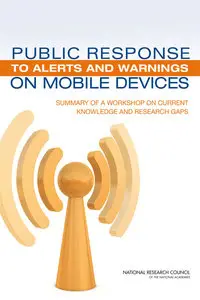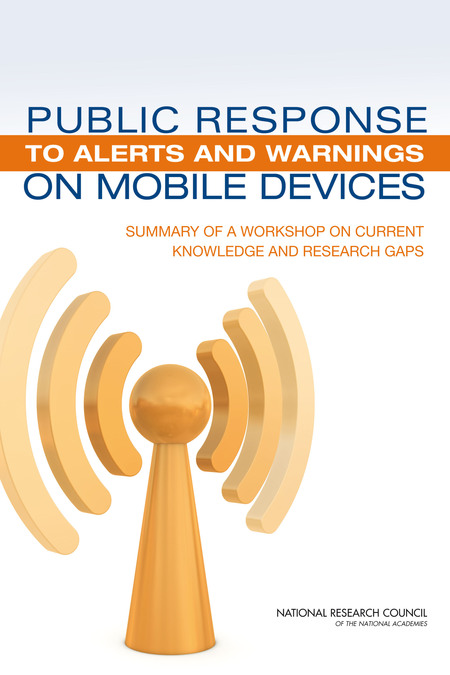Public Response to Alerts and Warnings on Mobile Devices: Current Knowledge and Research Gaps
Computer Science and Telecommunications Board, Division on Engineering and Physical Sciences, Committee on Public Response to Alerts and Warnings on Mobile Devices, National Research Council
NAS Press | 2011 | ISBN: 0309185130 9780309185134 | 91 pages | PDF | 6 MB
Computer Science and Telecommunications Board, Division on Engineering and Physical Sciences, Committee on Public Response to Alerts and Warnings on Mobile Devices, National Research Council
NAS Press | 2011 | ISBN: 0309185130 9780309185134 | 91 pages | PDF | 6 MB
The purpose of this independent volume is to provide candid and critical comments that will assist the institution in making its published report as sound as possible and to ensure that the report meets institutional standards for objectivity, evidence, and responsiveness to the study charge.
The book presents a summary of the Workshop on Public Response to Alerts and Warnings on Mobile Devices: Current Knowledge and Research Gaps, under the auspices of the National Research Council's Committee on Public Response to Alerts and Warnings on Mobile Devices.
The workshop was structured to gather inputs and insights from social science researchers, technologists, emergency management professionals, and other experts knowledgeable about how the public responds to alerts and warnings, focusing specifically on how the public responds to mobile alerting.
Contents
1 OVERVIEW AND CONTEXT: THE COMMERCIAL MOBILE ALERT SERVICE, THE WARNING PROCESS, AND PUBLIC RESPONSE
Commercial Mobile Alert Service (CMAS)
Research on Effective Alerts and Warnings and Implications of the Research for CMAS
Misconceptions About Responses to Alerts and Warnings
Observations of Workshop Participants
2 CURRENT USE OF TEXT MESSAGES FOR ALERTS AND WARNINGS: EXPERIENCES AND LESSONS LEARNED
Subscription
Message Content
Use of Multiple Methods to Ensure Receipt and to Cope with Network Congestion
Operational Issues
Education of the Public
Observations of Workshop Participants
3 COMMUNICATING DURING A CRISIS
Crisis Communication Versus Risk Communication
Old Media Versus New Media
Use of Social Media to Fill Communications Gaps
Synergistic Use of Multiple Media
Information Sharing and Gathering
Microblogging
Other Next-Generation Crisis Communication Tools
Observations of Workshop Participants
4 PUBLIC EDUCATION AND TRAINING
An Example: The Great California ShakeOut
Building an Educational Campaign
Observations of Workshop Participants
5 COMMUNICATING WITH AT-RISK POPULATIONS
Use of Wireless Devices by People with Disabilities
Special Considerations for People Who Are Blind or Have Low Vision
Special Considerations for Those with Impaired Hearing
Special Considerations with Respect to Disabilities in the Elderly Population
Gender-Based Considerations
Considerations Related to Race and Ethnicity
Observations of Workshop Participants
6 RESEARCH GAPS
Research Opportunities
Implementation Challenges
Future Tools for Alerts
APPENDIXES
A Workshop Agenda
B Biosketches of Workshop Speakers
C Committee and Staff Biosketches
with TOC BookMarkLinks



